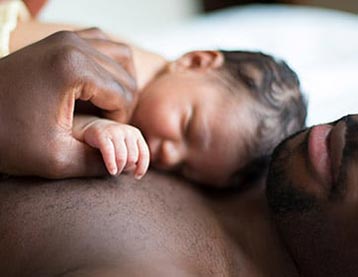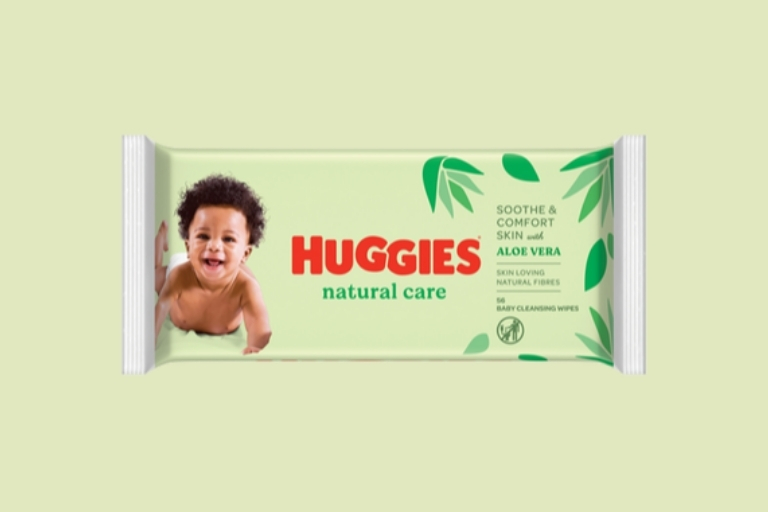Newborn skin care: the low-down

Your baby skin care guide
You bring your newborn home from the hospital, only to find they’re more prone to spots than a teenager. Midwife Carey Burt reassures us that skin problems in babies are common, so you’re not alone. “A baby’s skin is more likely to become irritated than adult skin, and it can quickly lose moisture. Getting into a good routine from the get-go will help.” Here’s how to start as you mean to go on.
1. Stock up on baby skincare essentials
Shop for baby skin care essentials like:
- Cotton wool balls (use with clean water to clean tender areas like around the eyes.)
- A soft, clean towel (pat the skin, don’t rub)
- Petroleum jelly (protects against nappy rash)
- Hypoallergenic baby wipes (Huggies® Wipes are approved by the British Skin Foundation)
2. Learn how to ‘Top and Tail’
“You may want to wait until your baby’s umbilical cord has fallen off (about a week after birth) before giving your baby a proper bath. Until then (and between baths once they are established), clean just your baby’s head and the bottom area with warm water and cotton wool - the balls are best.”
Carey Burt, NHS Midwife, Brilliant Birth Company
Even after your baby's first bath, topping and tailing your baby between baths is a great way to keep them clean while looking after their skin. Explore our guide to bathing your baby for step-by-step tips on topping, tailing and bathing your baby.
3. Go easy on the baths
Experts believe delaying bathing may help your baby latch on to get breastfeeding started, plus the coating on your baby’s skin from the womb, called vernix, helps stop the skin becoming too dry. The NHS advises that you leave vernix to be absorbed naturally by your baby’s skin and says it protects from infection in the first few days.
The RCM says you should only bathe your baby two or three times a week and to ‘top and tail’ in between. For the bath itself, the RCM recommends plain water, or a baby bath product that’s suitable for sensitive skin and doesn’t contain sodium lauryl sulphate.
"It’s normal for babies to cry when they first have a bath. Please don’t worry, this isn't because they don't like it, it’s just a new sensation. Keep the bath short - just five minutes to start with - and build up from there. Try singing nursery rhymes to keep them calm."
- Carey Burt, NHS Midwife, Brilliant Birth Company
4. Keep the nappy area clean and dry
“This is very important to prevent nappy rash occurring,” says Carey. “Start off with just water and cotton wool, as before. After a couple of weeks, you can switch to using wipes. When picking a wipe, I’d always advise using one with no alcohol and parabens. The more natural a product is, the less irritation you’re likely to cause to the skin.” Give your baby some nappy-free time when you can to let the skin dry out and use a barrier cream to prevent nappy rash.
5. Think safety first
Never leave your baby unattended during bath-times, even for a second. A baby can drown in just a few centimetres of water.
6. If in doubt, ask
It’s very common for a baby to suffer from dry skin, cradle cap, eczema and other skin problems during their first year. If you are worried, be sure to chat with your midwife or health visitor. The RCM advises its members on the care of new-born skin, so they are a great source of advice.














